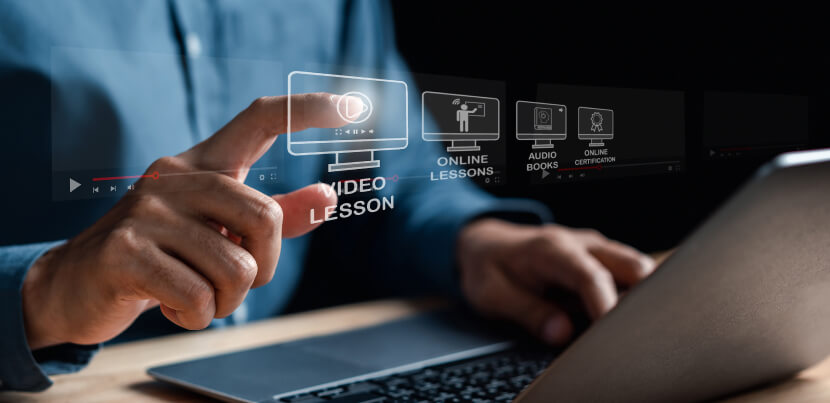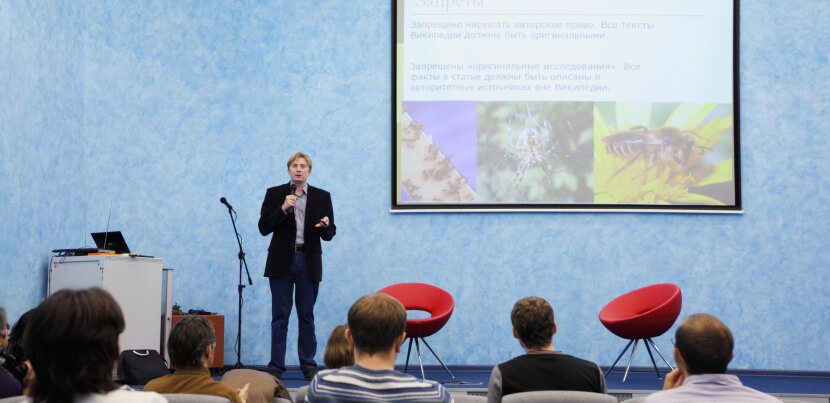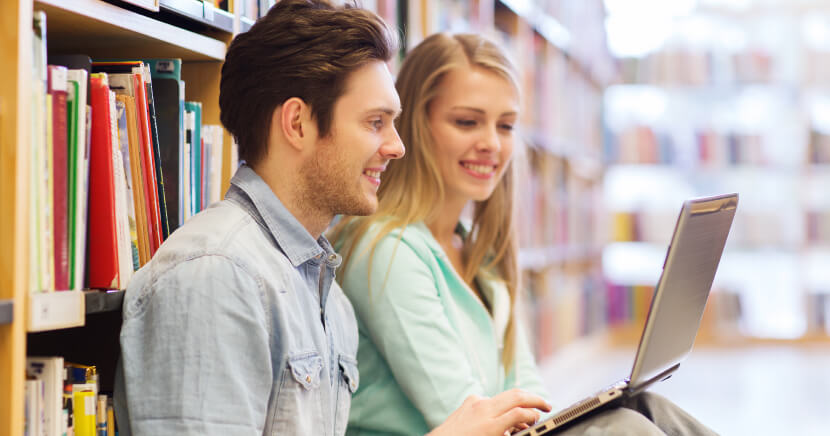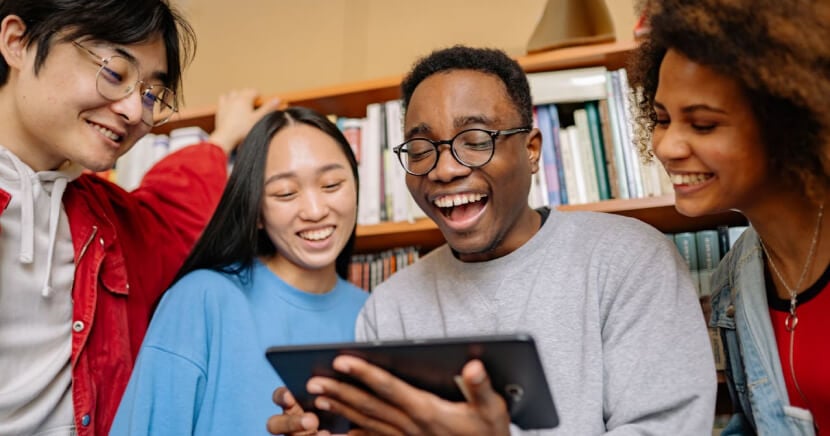People visit their library branch for a variety of reasons. Some come in search of the latest installment of Rebecca Yarros's Empyrean series, while some might be there to put the finishing touches on their podcast in the library's media lab.
For others, the library is a place where they can supplement their formal education with self-directed learning, allowing them to acquire new skills and gain knowledge, whether for its own sake or as part of their professional development.
Serving the needs of lifelong learners
The public library has long served the needs of the lifelong learner. The US Office of Education recognized this back in 1991 when it published a booklet called Partners for Lifelong Learning, Public Libraries and Adult Education.
In the introduction, the authors — library educators Margaret E. Monroe and Kathleen de la Peña McCook (formerly Heim) — noted the following:
Over the years, the public library's search to meet community needs has led it to fill a unique role in helping people achieve their desires for literacy and lifelong learning: a role of which it is justifiably proud. It has been called the People's University: a public agency serving the information needs of all citizens throughout their lives.
See also:
-
Why libraries should include media literacy training for adults
-
How digital resources at libraries can create a better experience for patrons
Libraries are "champions of lifelong learning"

According to the American Library Association website, "As champions of lifelong learning, libraries are a place to quench curiosity, access technology and explore new ideas, hobbies and careers."
Libraries offer a vital space for continuous personal growth, providing access to an array of books, technology and workshops. Individuals committed to their own development use these resources for research and skill acquisition. They're community hubs where people of all backgrounds can come to learn, explore and grow.
For lifelong learners, libraries are invaluable in fostering a culture of perpetual learning and curiosity. Additionally, libraries often host events and speakers, providing lifelong learners with opportunities to engage with thought leaders. This enriches the lifelong learning experience by connecting them with real-world insights.
Let's take a look at some ways that libraries can meet the needs of any patron looking to become a lifelong learner, whether for personal or professional reasons.
Adult education programs
Libraries can collaborate with local educational institutions and organizations to provide adult education programs, literacy initiatives and continuing education courses.
The San Diego Public Library, for example, has partnered with Gale's Excel Adult High School program to offer a self-paced online diploma-completion program to patrons aged 19 and up. Enrollment is free and the program also includes job training as well as placement help after students finish the program.
San Diego Public Library director Misty Jones told San Diego Downtown News, "The library has always been about trying to provide resources for people in order to help them be more successful. We are all about literacy courses and for us, this high school diploma program when it was brought forward, was just the next logical step to help people."
Technology and information access

Many of your patrons — particularly those who are millennials or members of Generation Z — are likely to be "digital natives". Education consultant Marc Prensky popularized that term with his 2001 article "Digital Natives, Digital Immigrants", in which he describes digital natives as having "spent their entire lives surrounded by and using computers and videogames, digital music players, videocams, cell phones and all other toys and tools of the digital age".
For the benefit of patrons who do not fall into this category, or who lack access to digital tools for financial or other reasons, libraries can help bridge the digital divide by offering free access to computers, the internet and other technologies to facilitate online learning and research for those who may not have these resources at home.
Exploring diverse perspectives
The majority of libraries already do this to some degree. In fact, according to the American Library Association (ALA), 96% of public libraries in the United States provide free public internet access. This enables individuals to access information and also to explore diverse perspectives.
In today's digital age, access to accurate information is not just a tool for personal development; it can be vital for making informed decisions about health, education and civic engagement. Courses or workshops in media and digital literacy, led by library staff or guest experts, can help patrons navigate the vast amount of information available, discern credible sources from unreliable ones and avoid falling victim to misinformation and fake news.
By providing a wide range of resources, including books, academic journals, databases, internet access and digital news platforms like PressReader (which features thousands of newspapers and magazines from around the world), libraries can empower lifelong learners from a wide range of socio-economic backgrounds to become critical media consumers.
Lifelong learning is good for democracy
In an era defined by the ever-evolving media landscape, the concept of lifelong learning has taken on a new dimension of relevance.
But why is media literacy such an important component of lifelong learning? Turns out it's good for democracy. According to UNESCO's Media and Information Literacy Policy and Strategy Guidelines, media literacy education often results in increased citizen participation in society, which can lead to the following positive outcomes:
More active and democratic participation
UNESCO cites scholarly research suggesting that in addition to having positive effects on academic outcomes, information literacy and media literacy predispose citizens towards taking a more active role in society.
Media and information literacy (MIL) “is a basis for freedom of expression, access to information and quality education for all,” the guidelines read. “Without MIL competencies, citizens cannot be well informed because they do not have access to information and are not empowered to process and use it.”
Awareness of ethical responsibilities for global citizenship
Media literacy deepens citizens’ understanding of such fundamental rights as freedom of opinion, expression and communication, and the balance between these rights and ethical responsibilities at the personal and societal level.
By linking these responsibilities with the concept of global citizenship, media literacy education empowers all citizens to respect and promote the rights of others.
Enabling diversity, dialog and tolerance
MIL encourages greater engagement with society, which makes it a powerful tool to enable intercultural dialog, tolerance and cultural understanding across different sectors of society and among all age groups.
This form of lifelong learning ensures that democratic societies benefit from well-informed, engaged and critical citizens, essential for the sustenance and growth of democratic ideals.
Virtual workshops and classes

In our blog post on utilizing library space for community engagement and recreation, we once again cited the ALA, which defines community engagement as "the process of working collaboratively with community members — be they library customers, residents, faculty, students or partner organizations — to address issues for the betterment of the community."
One of the best ways public libraries can encourage this type of engagement is to facilitate lifelong learning by providing patrons with educational opportunities. As the pandemic made clear, such opportunities are not found exclusively within the four walls of a classroom — or even in the physical space of the library.
The impact of COVID
Libraries had already been adopting more and more technology prior to the onset of COVID-19, but the pandemic accelerated things in a way no one could have foreseen.
As we noted in a 2021 blog post on the ways that COVID-19 changed library programming, the pandemic increased demand for eBooks and other electronic resources, with patrons all around the globe borrowing 430 million digital items in 2020. The increased reliance on digital resources was a significant change for lifelong learners.
With many physical library branches temporarily closed, reading materials weren’t the only things that went digital during COVID. Event providers everywhere scrambled to bring live gatherings into a virtual space. Libraries offered everything from drag queen story hour to Zoom tutorials online, bringing many of their important services and community-building events to people in the comfort and safety of their own homes.
Host workshops, seminars, and classes on various topics, including technology skills, internet safety, language learning, financial literacy, environmental stewardship and other subjects of interest to the community.
Looking for inspiration? Programming Librarian has a fantastic list of resources and ideas for virtual and hybrid events.
New skills, new challenges
Lifelong learning plays a crucial role in personal development and libraries are uniquely positioned to offer services that enrich the curious minds in their communities. Here are a few more ways libraries can meet the needs of the lifelong learner in search of new skills, new challenges and personal fulfillment:
Guest speakers and events: Organize events featuring guest speakers, authors and experts who can share insights and knowledge on diverse subjects, encouraging a culture of curiosity and learning.
Reader advisory services: Provide personalized recommendations and reader advisory services to help patrons discover new books and resources aligned with their interests and learning goals. (Libraries that offer PressReader can use the Self-Pub feature to provide users with lists of recommended books and other relevant information.)
Community partnerships: Build partnerships with local businesses, community organizations and educational institutions to create a network of resources and learning opportunities for patrons.
Learning spaces: As we have previously observed, great library design evolves alongside its community needs. Designate areas within the library as learning spaces where patrons can study, work on projects or participate in group discussions. Consider incorporating technology for collaborative learning.
Career development support: Never underestimate the importance of library resources in boosting the workforce. Offer help and services to support career development, including resume building, job search assistance and information on in-demand skills.
Language learning resources: Provide language learning materials and resources to support patrons in acquiring new languages, catering to the multicultural aspects of the community. Exploring a new language is just one of the ways patrons use PressReader that isn't just to read the news.
Book clubs and discussion groups: Facilitate book clubs and discussion groups that encourage intellectual exchange, critical thinking and the exploration of diverse perspectives.
Children and family programs: Implement programs for children and families that promote early literacy, STEM education and other essential skills to create a foundation for lifelong learning.
Flexible learning formats: Recognize diverse learning styles and accessibility needs by offering materials and programs in various formats, such as visual, auditory or interactive content.
Collect feedback: Establish a feedback mechanism to understand the evolving needs of the community, allowing the library to adapt and expand its offerings accordingly. This could take the form of an old-fashioned suggestion box in the branch, or a virtual version on the library's website.










